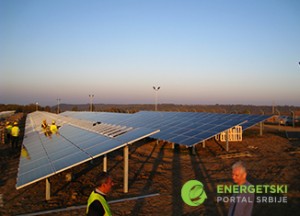As we close out a summer marked by uncertainty in news and events, one trend for which analysts voice increasing certainty is the accelerating pace of the clean-energy transformation reshaping how the world generates electricity.
With increasing speed, global energy markets are turning away from fossil fuels and towards wind and other renewable sources, not just because they’re clean but because they’re cheaper, more competitive energy choices and offer a level of long-term certainty more price-volatile fossil fuels just can’t match.
In fact, by 2030 clean energy is expected to overtake fossil fuels and become the largest source in global electricity production — and wind power is forecast to lead the way to meet the surging demand for renewables. In its 2016 Outlook, Bloomberg New Energy Finance (BNEF) projects: a fundamental transformation of the world electricity system over coming decades towards renewable sources.
From forecast data to market demand, it’s clear the future belongs to wind and other clean energies.
In the top energy markets on six continents, wind is now the cheapest or largest source of newly installed power and gaining share. In 2015, the wind industry crossed the 60 gigawatt (GW) mark for the first time and reached an unprecedented 63 GW installed globally.
The bottom line: wind is winning. Not just in forecasts, but in today’s global marketplace.
Wind power installations are projected to continue this trend, more than doubling in developing countries and increasing by one-third in developed countries by 2030. As wind energy costs continue to drop, the primary drivers for clean energy are expected to include replacement of existing generating capacity – fossil fuel or nuclear – because they simply no longer make economic sense; further growth in global electricity demand; long-term policy stability such as that provided by the production tax credit in the U.S.; and nation-specific targets driven by the Paris Climate Agreement.
Developing markets in particular have an opportunity to leapfrog older energy sources and meet new electricity demand by using wind power that is cleaner and cheaper than fossil fuels. One example is the Lake Turkana wind project in Kenya, where Vestas supplies wind turbines and Google will be a key investor. Upon completion, it will supply 310 megawatts of clean power, account for some 15% of the country’s electricity consumption, and power Kenya’s future growth more cheaply and cleanly than traditional fuels.
While the present and the future look bright for renewables, pushing their energy costs even lower remains key for accelerating the transition to a clean energy mix globally. BNEF reports that onshore wind’s costs are expected to drop 23–36% globally by 2030, but Vestas is committed to driving down the levelized cost of wind energy even further.
To achieve this, we are leading the industry with investments in research and development and our smart data capabilities to help customers lower their cost of energy, increase their annual energy production, and strengthen their business case. With an unrivaled data pool from the industry’s largest installed base of wind turbines as well as meteorological reporting from around the world, we are constantly improving every aspect of the business — from product design and testing, siting and manufacturing, to operations and maintenance.
With this kind of constant innovation and technological advancement driving down the cost of energy, wind is well-positioned to keep its lead as the preferred renewable energy choice. And clean power will continue leading the global transformation away from traditional energy sources.
Indeed, the future belongs to clean energy, and the world’s new clean-energy economy looks strong.
Source: theguardian.com



